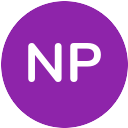5 Alternatives to Podia for Selling Digital Products and Subscriptions".
By Gregor K. published about 2023-01-28 11:23:58
Are you looking for websites like Podia that offer a platform for selling digital courses, memberships and downloads? If you’re an online entrepreneur, then you’re in luck! We’ve compiled a list of similar websites like Podia that offer a comprehensive suite of digital products and services. From creating digital storefronts to managing memberships and subscriptions, these websites will help you to set up an effective online business. In this article, we’ll look at some of the best Podia alternatives and the features they offer. So read on to find the right platform for your online business.
Podia
Podia is an all-in-one digital selling platform that helps creators, entrepreneurs, and small businesses easily sell online courses, memberships, and digital downloads.
Features
- Create digital products and sell them online
- Collect payments from customers
- Create and manage memberships
- Analyze sales and customer data
- Automate marketing and customer engagement
- Design beautiful product pages
- Generate and share referral links
Table of Contents
- 1Introduction
- 2Podia Alternatives
-
3Head-to-Head Comparisons
- 3.1Podia vs Circle
- 3.2Podia vs ClickFunnels
- 3.3Podia vs Gumroad
- 3.4Podia vs Kajabi
- 3.5Podia vs Kartra
- 3.6Podia vs Mighty Networks
- 3.7Podia vs Patreon
- 3.8Podia vs Payhip
- 3.9Podia vs Peloton
- 3.10Podia vs Squarespace
- 3.11Podia vs Shopify
- 3.12Podia vs Sellfy
- 3.13Podia vs Square
- 3.14Podia vs Teachable
- 3.15Podia vs Thinkific
- 3.16Podia vs Twilio
- 3.17Podia vs Udemy
- 3.18Podia vs Wix
- 3.19Podia vs WordPress
- 3.20Podia vs Webflow
- 4Podia History
- 5Podia Status
- 6Comments
- 7Further Links
Podia Alternatives
Teachable
Similar to Podia, Teachable offers tools to create and sell online courses, digital downloads, and membership plans.
Teachable provides more extensive course content creation tools and analytics than Podia, but doesn't offer webinars or live streaming.
Thinkific
Similar to Podia, Thinkific allows users to create and sell online courses, digital downloads, and membership plans.
Thinkific offers more comprehensive features for course creation and analytics than Podia, but does not have the same level of support for webinars or live streaming.
Udemy
Similar to Podia, Udemy is an online learning platform where users can create and sell courses, digital downloads, and membership plans.
Udemy lacks some of the features offered by Podia, such as webinar and live streaming support, but has a larger user base and more comprehensive analytics tools.
Kajabi
Similar to Podia, Kajabi offers tools to create and sell online courses, digital downloads, and membership plans.
Kajabi has more extensive course creation and analytics features than Podia, but does not offer webinar or live streaming support.
LearnWorlds
Similar to Podia, LearnWorlds allows users to create and sell online courses, digital downloads, and membership plans.
LearnWorlds offers more extensive course content creation and analytics than Podia, but doesn't provide the same level of webinar support or live streaming capabilities.
LearnDash
Similar to Podia, LearnDash offers tools to create and sell online courses, digital downloads, and membership plans.
LearnDash provides more extensive course content creation and analytics than Podia, but doesn't have the same level of webinar or live streaming support.
Ruzuku
Similar to Podia, Ruzuku allows users to create and sell online courses, digital downloads, and membership plans.
Ruzuku has more comprehensive features for course creation and analytics than Podia, but doesn't offer webinar or live streaming support.
Circle
Both Podia and Circle are e-commerce websites that allow users to sell products or services.
Podia offers a comprehensive suite of features for digital creators, while Circle focuses more on allowing businesses to process payments and manage customer relationships.
ClickFunnels
Both Podia and ClickFunnels are digital platforms that allow users to create, market and sell their products or services.
Podia focuses on creating an online store for digital downloads while ClickFunnels focuses on creating sales funnels and landing pages.
Gumroad
Both Podia and Gumroad are used to create and sell digital products, such as courses and memberships.
Podia provides tools for creating websites, while Gumroad only provides the ability to host content and accept payments.
Kartra
Both Podia and Kartra are websites that offer digital marketing solutions for businesses.
Podia focuses on digital products, while Kartra offers a wider range of services such as email automation and membership sites.
Mighty Networks
Both Podia and Mighty Networks offer online tools for creating, hosting, and monetizing digital products and services.
Podia focuses on selling physical and digital products, while Mighty Networks is a platform for creating membership communities.
Patreon
Both Podia and Patreon provide a platform to help creators monetize their work.
Patreon specializes in recurring revenue models, while Podia offers one-time purchases, subscriptions and memberships.
Payhip
Both Podia and Payhip are websites that allow users to sell digital products.
Podia also allows users to create online courses, while Payhip is geared more towards selling ebooks and PDFs.
Podia Head-To-Head
Are you looking for an easy and effective way to create a digital product storefront? If so, then you have likely heard of Podia. It's one of the most popular eCommerce solutions on the market right now, but it isn't the only one. In this head-to-head comparison, we'll take a look at Podia compared to other leading websites that offer similar services. We'll evaluate each service based on features, pricing, ease of use, and customer support to help you make an informed decision about which website is best suited for your needs.
Podia and Circle are both websites that allow users to sell digital products such as online courses, memberships, and downloads. Both sites offer users the ability to customize their stores with a variety of themes and design options. With Podia, users can also create landing pages for their products which provide a great way to promote product offerings. In terms of payment processing, both Podia and Circle offer integrated payment systems as well as the ability to accept Stripe payments. However, Circle also allows users to connect PayPal accounts for a more comprehensive payment system. Additionally, Podia offers features such as automated email marketing campaigns, while Circle provides integrations with various marketplaces like Shopify and BigCommerce. When it comes to customer support, Podia offers 24/7 live chat whereas Circle does not have any customer support channels available. Finally, Podia has an extensive library of educational resources which include webinars and tutorials that help users get the most out of their platform.
Podia and ClickFunnels are both online platforms that help small businesses create and promote their digital products. Both platforms offer website building tools, payment processing capabilities, email marketing, course and membership site creation, customer support, and analytics. Podia excels in its ease of use with a simple drag-and-drop editor for customizing webpages. It also offers integrated blog functionality for content marketing efforts. In addition, Podia's customizable checkout page allows customers to purchase from multiple products at once. Finally, Podia includes an affiliate program to help businesses scale their reach quickly. ClickFunnels offers a more robust selection of tools for marketers including sales funnels, lead capture pages for gathering email addresses and customizing user experience based on the customer's journey. In addition, multi-step checkout processes are available to increase conversion rates and generate higher revenue per sale. Additionally, ClickFunnels provides A/B testing functionality to optimize campaigns and maximize ROI. Overall, both Podia and ClickFunnels offer many features to help businesses grow their digital products quickly and easily. Depending on the business's goals, either platform could be suitable as they each have different strengths that can benefit various types of entrepreneurs.
Podia and Gumroad are both online platforms that enable users to launch digital products. Both allow users to easily create an online storefront and customize it to match their branding. Podia also offers comprehensive storefronts, allowing users to sell digital products, physical goods, services, and memberships all in one place. With Gumroad, users can quickly set up their store with a few clicks and begin selling right away. Both platforms offer tools for creating custom landing pages and managing discounts. They both offer analytics tools for tracking sales performance, product performance, customer insights, and more. Podia provides advanced marketing automation features such as automating payment processes for recurring subscriptions and emails for abandoned carts. Additionally, Podia provides an integrated blog feature as well as customizable courses that can be used to create interactive learning experiences for customers. Gumroad's main focus is on providing an out-of-the-box solution for selling digital products without any coding or design experience required.
Podia and Kajabi are both websites that allow users to create their own online stores. With Podia, users can easily create an online store without any coding skills, allowing them to sell digital products such as ebooks, video courses, and webinars. Additionally, they can also offer service-based businesses a platform to deliver virtual services and sell memberships. Kajabi is similar in that it provides the same digital products and services, but with a bit more flexibility. For example, users can create custom landing pages for their products or services as well as set up automated email sequences for marketing campaigns. Both platforms feature integrated payment processing options for customers, but only Kajabi offers the ability to manage events through its platform. However, Podia does provide features like analytics tools to track user engagement on their site, as well as website customization tools like drag-and-drop page building. Ultimately, both sites offer powerful tools to help entrepreneurs quickly launch and grow their business online.
Podia and Kartra are two popular all-in-one marketing platforms that offer a wide range of services and features to help businesses grow. Podia focuses more on selling digital products, while Kartra specializes in creating automated campaigns for lead generation, sales funnels, and email automation. When it comes to digital products, Podia is the clear leader. It offers an easy-to-use platform to create memberships, courses, digital downloads, webinars, and even physical goods. It also provides powerful marketing tools such as analytics and segmentation to gain insights into customer behaviors. Kartra excels in helping businesses grow their online presence by providing powerful tools such as custom landing pages and lead capture forms. Users can also build automated campaigns to nurture leads through the sales funnel using email automation and dynamic content management. Both platforms offer comprehensive customer service including live chat support and comprehensive knowledge bases with helpful resources. Podia has the added advantage of offering 24/7 live phone support, while Kartra only provides email support. Ultimately, both Podia and Kartra are excellent options for businesses looking to expand their online presence or sell digital products; however, each platform has its own unique strengths that should be taken into consideration when choosing between them.
Podia and Mighty Networks both offer an all-in-one platform for creators to sell digital products, build a community, and grow their business. With Podia, users can quickly set up a website with customizable themes and pages as well as create digital products like courses, memberships, and downloads. Mighty Networks allows users to use their own domain name to create a branded space for their customers to connect with each other and consume content. Additionally, Mighty Networks provides tools that enable creators to host events, send newsletters, collect payments and manage subscriptions. Both platforms support integrations with existing tools like Zapier, Google Analytics and Stripe. In terms of customer service, Podia has dedicated email support while Mighty Networks offers dedicated phone support as well.
Podia and Patreon are both websites that offer digital creators the opportunity to earn money from their work. Podia allows creators to easily create a digital storefront for selling content such as ebooks, courses, memberships, downloads, and more. It also offers powerful marketing tools to help creators promote their work and reach more customers. On the other hand, Patreon is a crowdfunding platform that helps creators receive ongoing payments from fans and patrons. It gives them the ability to offer exclusive content rewards in exchange for their support. Both platforms allow users to track analytics and accept payments from various sources including PayPal or Stripe. They also provide customer support, but Podia offers a 24/7 live chat feature which may be useful for urgent matters.
Podia and Payhip are online platforms that allow customers to create their own digital storefronts. Podia offers a range of features to help businesses market and sell their products, including customizable storefronts, membership sites, email marketing, integrations with other services like Zapier, blog posts and podcasts, and analytics. Payhip offers a more limited set of features, such as purchase tracking and discount codes. Both platforms offer payment processing through PayPal and Stripe. However, Podia also supports multiple currencies for international sales. Additionally, Podia provides customer support by phone or email while Payhip does not.
Podia is an all-in-one platform for creators to sell digital goods such as courses, memberships, downloads, and more. It offers a comprehensive set of features to help creators build an online business including drag & drop website builder, payment processing, automated email marketing, and analytics tools. Peloton is a streaming fitness platform that offers interactive classes from top trainers in the world. It allows users to choose from thousands of on-demand workouts or join live classes with real-time instructor feedback. Podia provides tools for creating and selling digital products while Peloton focuses on providing an engaging fitness experience. Both platforms offer a wide range of features to help users create and engage with their audience.
. Podia and Squarespace are two popular website building platforms that help users create content-rich websites. Podia is tailored towards entrepreneurs and creators who want to use the platform to launch an online course, membership site, or digital downloads store. Meanwhile, Squarespace allows users to build powerful websites with a range of industry-leading design tools. When it comes to features, Podia offers an all-in-one solution for hosting digital products such as courses, memberships, and digital downloads. It also provides integrated marketing tools including email automation and landing pages. Additionally, it has built-in checkout options and an easy drag-and-drop builder for creating product pages. Squarespace provides many of the same features as Podia but also offers blogging capabilities and powerful ecommerce solutions. With Squarespace, users can choose from a range of templates and customize their website with drag-and-drop tools, which makes it easy to design a professional looking site even for those without coding experience. Additionally, the platform includes SEO optimization tools for improving search engine rankings.
Podia and Shopify are two popular ecommerce solutions for selling digital products, services, and physical goods. Podia offers an array of features including a website builder, membership site creator, course creation tools, online store builder, email marketing capabilities, social media integrations, and powerful analytics tools. Shopify also provides an online store builder along with payment processing and shipping options for physical goods. Both solutions allow users to create customized stores with their own branding and aesthetic. However, Podia stands out for its comprehensive suite of features that makes building digital products and services easier than ever before. Shopify is more suited for those looking to sell physical goods due to its streamlined checkout process and payment processing options.
Podia and Sellfy are both ecommerce platforms that allow users to create an online store and sell digital products. Podia is a comprehensive platform providing a suite of features, while Sellfy is a more limited solution with fewer features. Podia provides users with the ability to host content such as membership sites, courses, webinars, and podcasts. It also offers services such as email marketing, affiliate programs, analytics, and integrations with other popular tools. Additionally, users can customize their storeâs look by adding logos and customizing colors. Sellfy focuses on allowing users to quickly set up an online store for selling digital products such as ebooks, photos, music tracks or apps. It provides customizable checkout pages but doesnât offer any additional services such as email marketing or affiliate programs. Additionally, designs are available but may be limited in comparison to those offered by Podia.
Podia and Square are both powerful tools for digital businesses. Podia is a comprehensive platform for creating and selling digital products and content, providing powerful marketing tools and a customizable storefront to promote your business. Square is an all-in-one payment processing system that accepts credit cards, debit cards, cash, Apple Pay, and Google Pay. Podia offers a wide range of features to help you reach your customers including email marketing, affiliate tracking, webinars, membership plans, and more. The platform also provides analytics to track customer behavior and engagement with your products or services. With Podiaâs integrated drag-and-drop builder you can create custom landing pages to capture leads or offer discounts on products. Square gives you the ability to accept payments from anywhere with its robust mobile app. You can customize the checkout experience with options like tipping or adding shipping fees at checkout. Square also allows you to connect with other online marketplaces like Etsy or eBay so you can easily accept payments from those platforms as well. The reporting dashboard helps you track sales activity in real time giving you valuable insights into customer trends and buying patterns.
Podia and Teachable are both comprehensive online course platform solutions that enable users to create, market, and sell online courses. Both offer a wide range of features designed to simplify the process of setting up an online teaching business. Both platforms provide customizable course building tools that allow instructors to easily create course content with rich multimedia elements such as audio and video files, images, and quizzes. Additionally, Podia and Teachable both offer payment processing capabilities so instructors can easily accept payments from their students. They also both provide marketing automation tools so instructors can build their student base by launching campaigns across email, social media and more. Podia has the unique ability to let users sell digital products such as ebooks, templates and software alongside course content. Additionally it offers an integrated customer support portal allowing instructors to quickly respond to customer inquiries without having to switch between multiple applications.Teachable on the other hand provides advanced customizations like drip-feeding content over a certain period of time as well as multi-language support for global selling opportunities.
Podia and Thinkific are both web-based platforms designed for entrepreneurs who want to create and sell online courses and digital products. Both offer a variety of features that allow users to create, market, and sell their content with ease. Podia allows users to create digital products such as ebooks, audio files, video tutorials, PDFs, and more with its drag-and-drop course builder. It also includes built-in email marketing tools that help you build an audience and convert them into customers. Additionally, Podia offers a customizable website design featuring pages such as a checkout page, sales page, customer login page, and more. Thinkific also has a drag-and-drop course builder that allows users to easily upload their content. It also includes marketing tools such as email automation and coupon codes to promote your course or product. Similarly to Podia, Thinkific provides website customization options with customizable checkout pages and member areas for personalized experiences for customers. Furthermore, Thinkific offers integrations with various third party apps like Zoom and Slack for enhanced efficiency.
Podia and Twilio are both software platforms that provide digital services to their customers. Podia is a platform that allows users to create and sell their own products, while Twilio provides communication APIs that enable developers to integrate voice, messaging, or video capabilities into their applications. Podia offers an all-in-one solution for creating digital products such as courses, downloads, memberships and webinars. It also provides marketing features such as an email marketing tool, analytics dashboard and affiliate program. Twilio is a cloud-based communication platform with APIs that allow developers to build voice, messaging, and video applications in any language quickly and easily. The platform includes tools for integrating SMS messaging into applications and websites, as well as real-time communications APIs for audio and video conferencing. Overall, Podia is focused on helping users create digital products while Twilio specializes in providing communication tools for developers. With both platforms, users can get started quickly without needing to write any code.
Podia and Udemy are both online learning platforms that provide users with educational content. Podia offers digital products, online courses, and memberships, while Udemy has a wide variety of courses in multiple languages. Both Podia and Udemy offer digital product sales, course creation tools, marketing materials, and the ability to create an online presence for instructors. Podia provides an easy-to-use drag-and-drop editor for course creation, while Udemy has text-based modules and quizzes that can be used to engage students. Podia also offers additional features such as a built-in customer relationship management (CRM) system and analytics dashboard to help track student progress and engagement. Udemy's courses are more comprehensive than Podia's. Udemy also allows instructors to host their own discussions within the platform. Additionally, Udemy provides promotional tools such as coupons and discounts that can be used to attract new students. Overall, both Podia and Udemy offer great platforms on which instructors can host their own courses or sell digital products. They both provide users with user-friendly tools for creating high quality content, as well as marketing materials to help promote it successfully. However, depending on your needs, one platform may be more suitable than the other.
Podia and Wix are two popular website building platforms that allow users to create their own websites. Both offer a variety of features, though they vary in how they provide them. Podia is a more specialized platform with offerings focused on digital product creators, including courses, memberships, and digital downloads. It also offers automated marketing tools such as abandoned cart recovery and email marketing. Wix is a more general-purpose website builder with a wide range of features and templates for creating any type of website. It provides an easy-to-use drag-and-drop editor, hundreds of professionally designed themes, and powerful SEO tools. Both platforms offer excellent customer support, but Podiaâs is specifically tailored to digital products creators while Wix has more general support options.
Podia and WordPress are both popular website options for creating an online presence. Podia is a comprehensive platform designed specifically for selling digital products, services, or memberships, while WordPress is a content management system (CMS) that can be used to create any type of website. Podia provides users with built-in features such as a drag-and-drop website builder, course creation tools, automated emails, and marketing automation. It also offers additional support for customers, including customer onboarding and customer service. WordPress on the other hand is open source software which allows users to customize their sites according to their own preferences. It has many themes and plugins available as well as an extensive library of support documents. In terms of hosting capabilities, Podia is designed to work on its own servers so there's no need for customers to purchase hosting from a third party provider. WordPress requires hosting from a web host in order to run properly, but it does offer more flexibility in terms of customization options than Podia does. Overall, both websites provide users with different levels of customization depending on their needs. For those looking for an all-in-one ecommerce solution for digital products and services, Podia may be the better choice; however, if more control over design and content is required then WordPress may be the better option.
Podia and Webflow are both website building tools designed to help users create professional-looking websites. Podia is an all-in-one platform that provides the tools to create, host, and market online courses, digital downloads, and membership sites. Webflow is a visual website builder with advanced design features, hosting options, and powerful integrations. Podia gives users access to a range of marketing features like email marketing automation campaigns and landing pages. They also offer a members portal that allows customers to view their subscriptions and purchases in one place. Webflowâs main focus is on designing beautiful websites using its drag-and-drop building system. It also has powerful integrations with third-party services like Shopify, Stripe, and more, as well as built-in marketing tools like SEO optimization and analytics tracking. Overall, both platforms provide users with the necessary tools for creating modern websites but with different focuses - Podia for creating digital products and Webflow for designing stunning websites.
History of Podia
Podia is an online platform that started in 2012. It allows users to create an online store to sell digital products and services such as courses, memberships, and downloads. The platform initially started as an e-commerce solution for educators, allowing them to easily create and sell their courses and products. Over the years, it has evolved to become a full-featured e-commerce platform that can be used by anyone to easily create and manage an online store.
Podia Status
The Podia website on online and reachable (last checked on 2025-07-15 01:01:02).
Comments
-

-

-

Prepare to be spoiled for choice with this list of Podia alternatives!
2023-05-03 13:36:32 · -

Reading this list is like going on a shopping spree for website platforms!
2023-07-28 16:40:01 · -

This list is perfect for when you're feeling indecisive about which Podia alternative to choose!
2023-08-25 14:24:08 · -

-

-

-

Looks like I'm going to have a tough time choosing the perfect Podia alternative!
2024-09-09 07:53:13 · -

Further Links
Trending Sites
Top Sites in Online Marketplace
Top Sites in Subscription Services
Podia
Podia is an all-in-one digital selling platform that helps creators, entrepreneurs, and small businesses easily sell online courses, memberships, and digital downloads.
Features
- Create digital products and sell them online
- Collect payments from customers
- Create and manage memberships
- Analyze sales and customer data
- Automate marketing and customer engagement
- Design beautiful product pages
- Generate and share referral links
Table of Contents
- 1Introduction
- 2Podia Alternatives
-
3Head-to-Head Comparisons
- 3.1Podia vs Circle
- 3.2Podia vs ClickFunnels
- 3.3Podia vs Gumroad
- 3.4Podia vs Kajabi
- 3.5Podia vs Kartra
- 3.6Podia vs Mighty Networks
- 3.7Podia vs Patreon
- 3.8Podia vs Payhip
- 3.9Podia vs Peloton
- 3.10Podia vs Squarespace
- 3.11Podia vs Shopify
- 3.12Podia vs Sellfy
- 3.13Podia vs Square
- 3.14Podia vs Teachable
- 3.15Podia vs Thinkific
- 3.16Podia vs Twilio
- 3.17Podia vs Udemy
- 3.18Podia vs Wix
- 3.19Podia vs WordPress
- 3.20Podia vs Webflow
- 4Podia History
- 5Podia Status
- 6Comments
- 7Further Links
